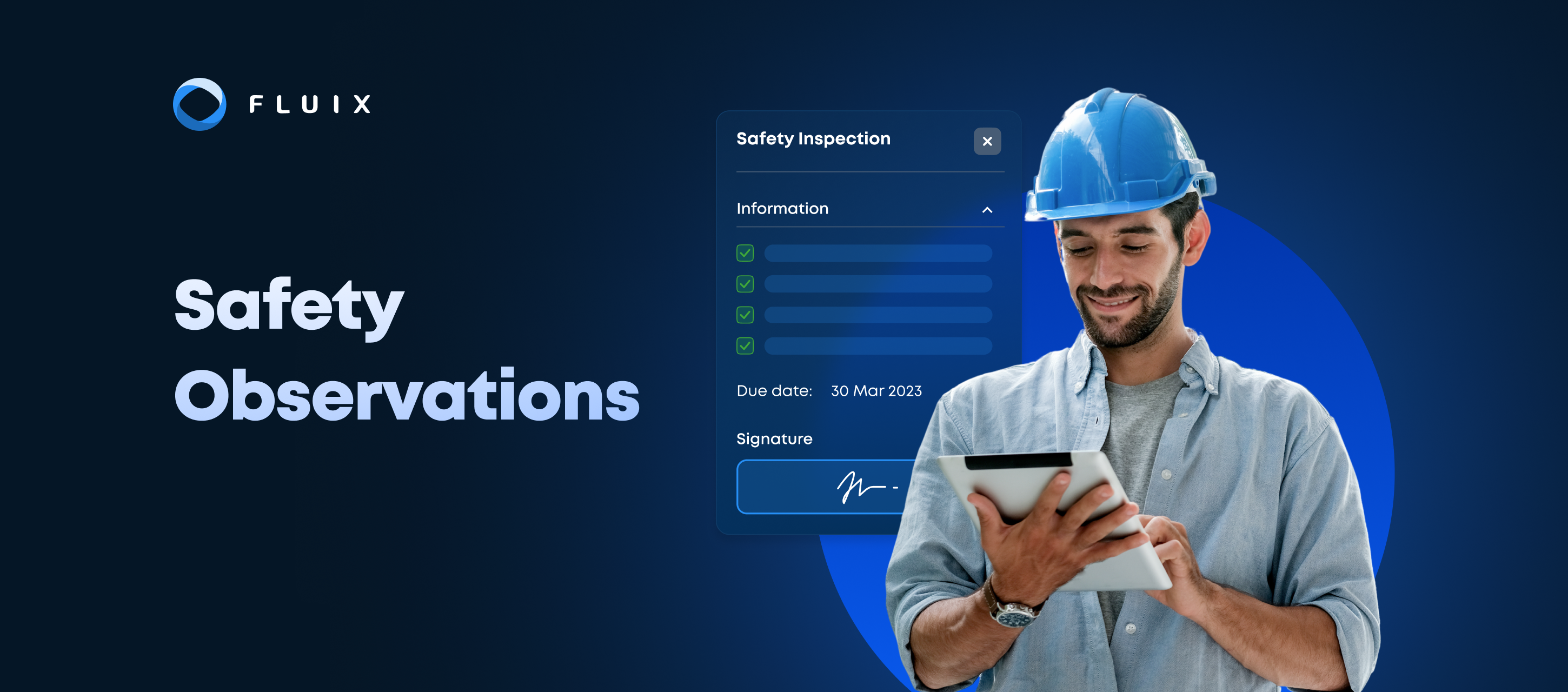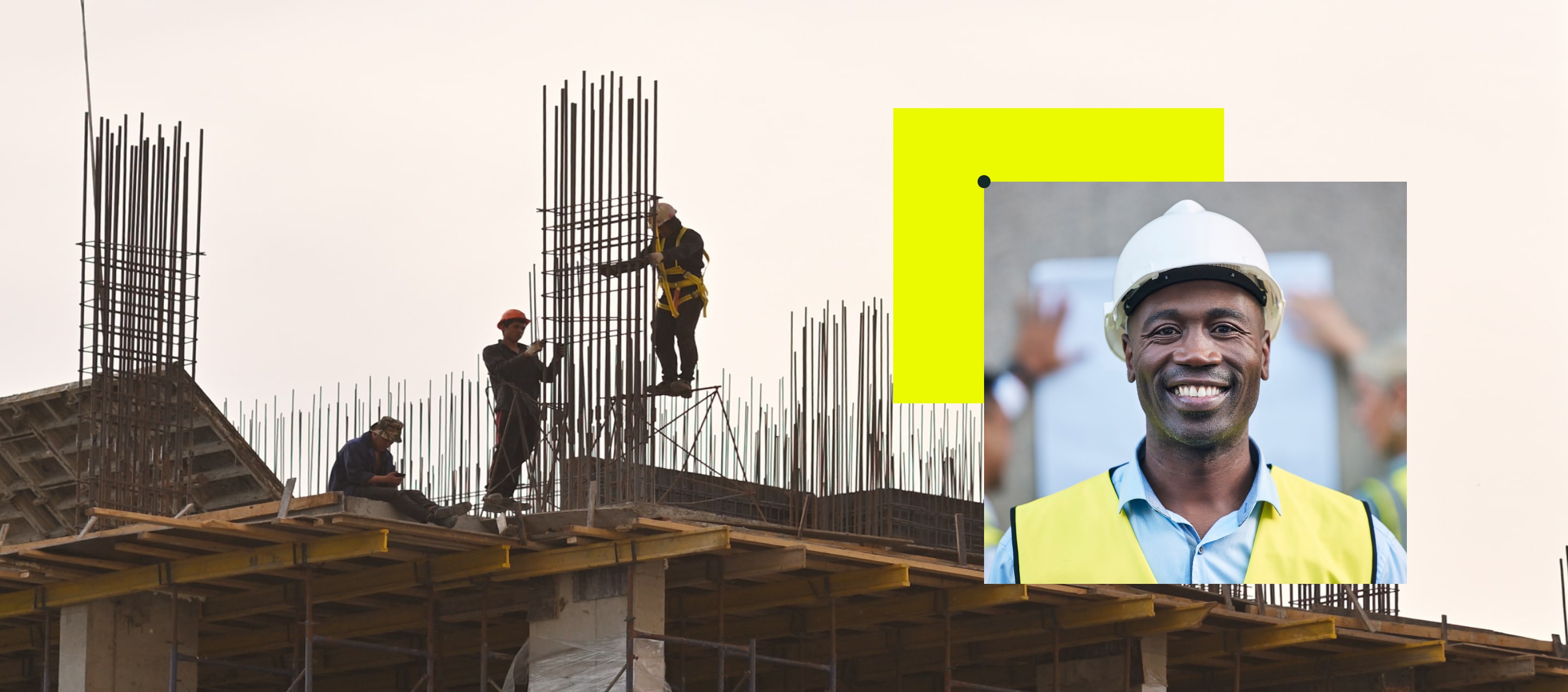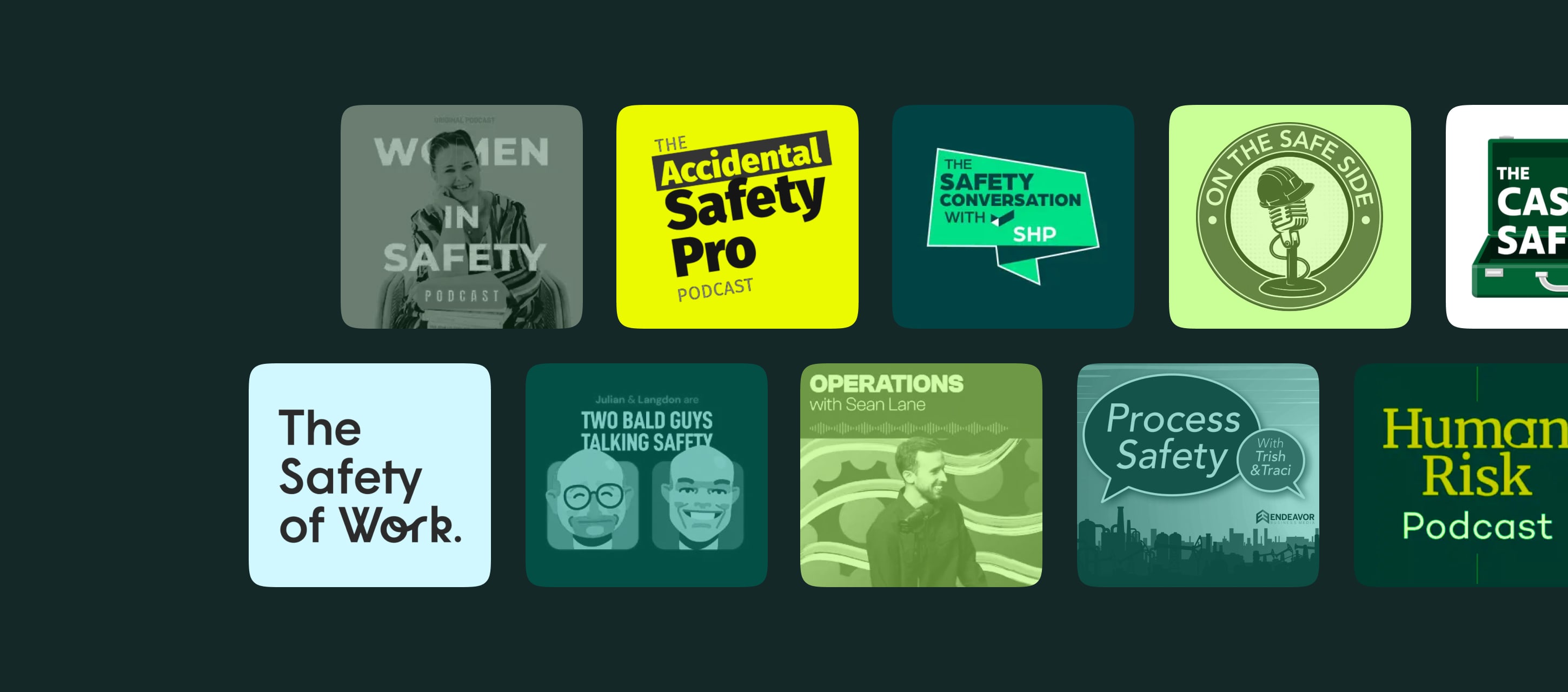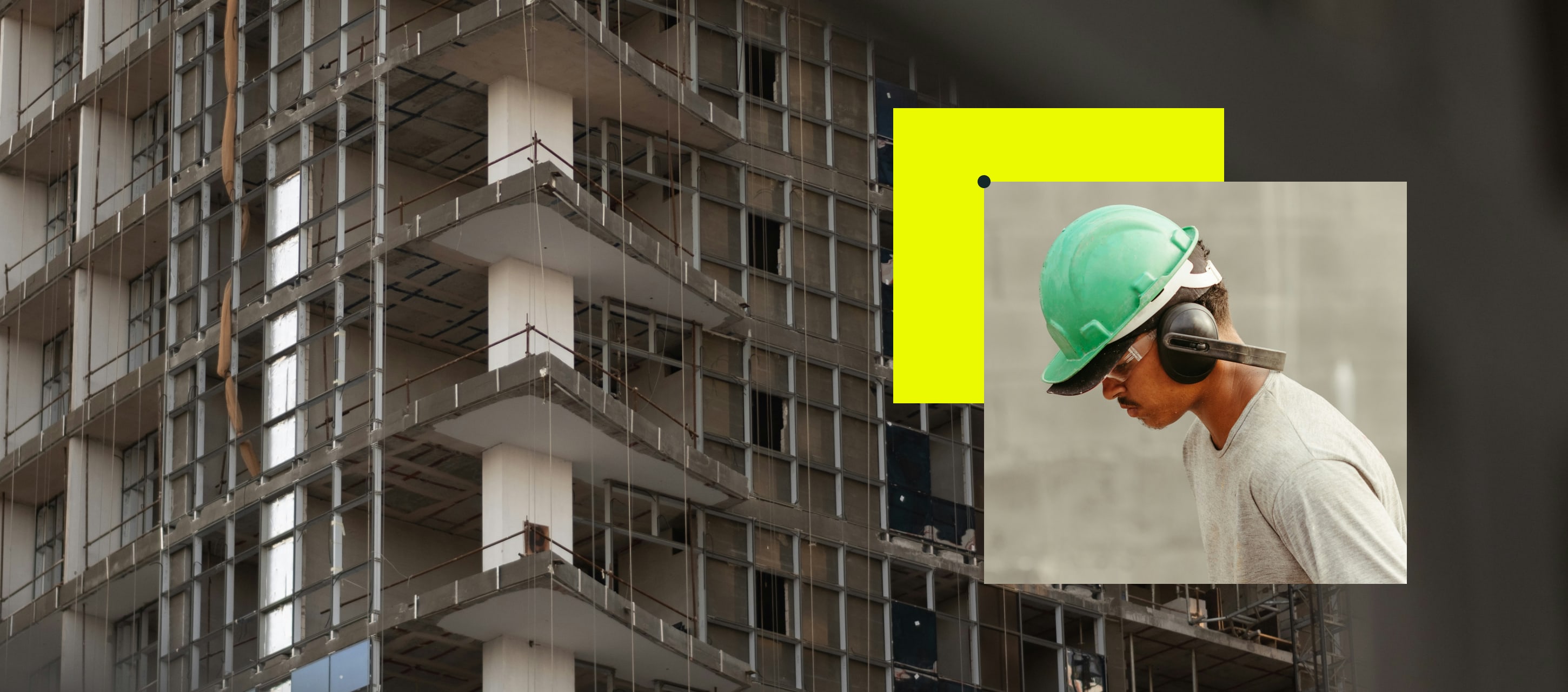Check reports by the Occupational Safety and Health Administration (OSHA), the National Safety Council (NSC), the Bureau of Labor Statistics (BLS), or other organizations that regulate safety, and you’ll see that workplace accidents cost businesses billions annually in lost productivity and medical expenses.
Preventing accidents before they happen is the best way to address this, and that’s where safety observations can come in handy.
But before you and your team can use them effectively, you need to understand what a safety observation is, how to implement it within your workplace, and how digital tools can help you.
Contents:
What Is a Safety Observation?
A safety observation is a proactive process for identifying potential hazards in the workplace through visual inspections.
When you conduct a safety observation, you’re carefully looking at work areas, how tasks are done, and at employee behaviors to pinpoint potential hazards. These hazards can include unsafe conditions like faulty equipment or cluttered walkways, as well as unsafe acts such as neglecting personal protective equipment or taking shortcuts.
Unlike safety audits, which focus on compliance with existing standards, safety observations aim to identify risks before they turn into incidents. The observation process aims to find liabilities and facilitate corrective actions and improvements.
Such a proactive strategy ultimately creates a safer environment for everyone, enforces accountability, and reduces the likelihood of costly accidents and injuries.
The Purpose and Applications of Safety Observations
What roles can safety observations serve? Primarily, they act as a proactive risk mitigation tool. By identifying hazards before they cause harm, you protect your employees, foster safety awareness, and minimize potential financial losses associated with accidents.
Besides prevention, organized and routine observations help you comply with industry regulations and safety standards. Regular observations and detailed documentation demonstrate an ongoing commitment to safety, often an essential aspect of regulatory compliance.
Moreover, observations provide valuable and actionable data about safety behavior and processes. Analyzing trends in observation reports can reveal areas where safety programs, training, and work processes need improvement.
Take a look at following table for more specific applications of safety observations across various safety-critical industries:
| Industry | Application | Benefits |
|---|---|---|
| Construction | Monitoring compliance with safety protocols on job sites | Reduced accidents, improved regulatory compliance |
| Renewable energy | Identifying hazards in wind farms and during maintenance activities | Enhanced risk management, prevention of equipment failures |
| Aviation | Ensuring adherence to safety procedures during aircraft operations | Increased safety for passengers and crew |
| Manufacturing | Observing machinery operation and worker behavior | Decreased workplace injuries, improved operational efficiency |
| Healthcare | Monitoring safety practices in patient care and hospital environments | Improved patient safety, reduced incidents of medical errors |
| Transportation | Ensuring vehicle and driver safety compliance | Enhanced road safety, reduced transportation-related incidents |
The Ultimate Guide
to Safety Inspections
Checklists, tools, and best practices to help you meet the safety regulations for your industry
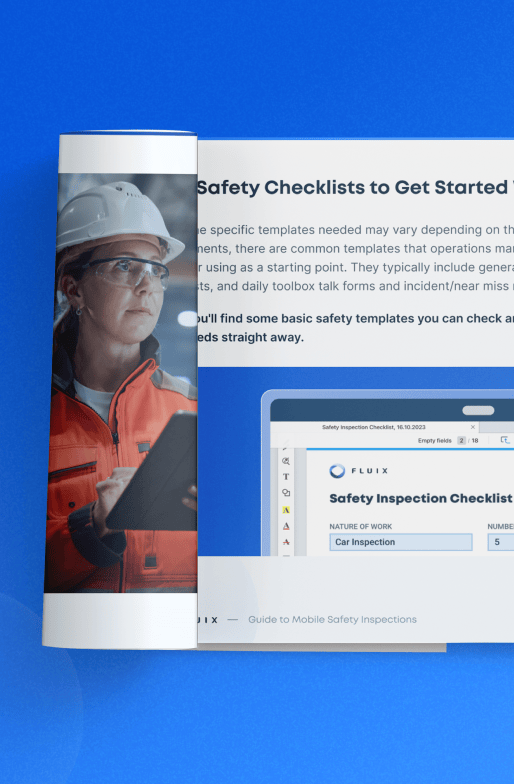

How to Conduct Safety Observations
The heart of a successful safety observation program lies in its execution. Who participates, how frequently observations are conducted, and the steps involved are all crucial. Beyond the practical aspects, strong safety communication ensures everyone understands their role and how their observations contribute to a safer workplace.
People Responsible for Conducting Observations
Who should be conducting safety observations? It’s typically a collaborative effort involving supervisors, safety personnel, committees, and frontline workers.
- Supervisors bring expertise and familiarity with safety standards and compliance, often helping organize and schedule observations and may also participate.
- Safety personnel and committees provide specialized knowledge, conduct observations, promote participation in safety programs, and analyze trends from observation data.
- Frontline employees offer invaluable insights into potential risks due to their day-to-day interactions with machinery and processes. Training, encouragement, and accessible communication channels can motivate these employees to report observations that improve safety practices.
Frequency for Conducting Observations
A safety observation is not a one-and-done process. The frequency of observations plays a critical role in their effectiveness. Still, there’s a balance between maintaining vigilance and avoiding redundancy.
A regular observation schedule ensures consistent facility coverage and minimizes the risk of hazards going unnoticed for extended periods, promoting behavior safety.
That said, the frequency of routine observations depends on the industry and inherent risks within the workplace. For example, a high-risk environment might require weekly observations, while a lower-risk setting might benefit from bi-weekly or monthly checks.
A company can also use targeted observations to focus on specific activities or areas with heightened risk. For example, newly implemented processes, tasks involving new equipment, or areas with a history of incidents might require more frequent observations than the company as a whole.
Steps in a Safety Observation
Now that you understand who conducts the observation process and how often it should occur, let’s delve into the steps involved. Safety observations typically follow a five-step process:
- Planning and preparation: The planning and preparation stage lays the groundwork for a successful observation by defining the area or activity to be observed. Selecting the appropriate observation checklist or form ensures you focus on the most relevant safety aspects. Finally, this step involves training observers on hazard identification and equipping them with the tools and skills to recognize potential risks.
- Observation: The “seeing” happens in the observation stage. This is when trained observers actively examine designated areas or activities. The focus is two-pronged: observing employee behaviors and the physical work environment. Observers should offer positive reinforcement for safe practices and address unsafe acts. The goal is to address concerns constructively, understand the root cause and prevent future problems.
- Documentation: In this stage, precise and objective recording of observations is necessary. This includes positive examples of safe practices and any identified hazards. Detailed descriptions are essential for clear communication and corrective actions. Consider using digital safety documents and specific software for safety inspections.
- Corrective actions: The corrective actions stage translates safety observation findings into concrete improvements. Identified hazards require prioritization based on the severity and likelihood of causing harm. Assigning responsibility with clear deadlines can ensure timely action. For significant or complex issues, further analyses might be necessary to understand underlying factors. Ultimately, the success of corrective actions depends on clear communication and a thorough understanding of the hazard.
- Follow-up and communication: The final stage ensures the corrective actions are implemented and completed without issue. This involves tracking the progress of assigned tasks, ensuring deadlines are met, and verifying hazards have been addressed. Beyond internal tracking, clear communication is crucial. Sharing overall findings from safety observations (without identifying individuals) keeps everyone informed and engaged.
The observation process reinforces the importance of safety in the workplace. It also highlights the significance of collaboration and establishes or fosters a safety culture with a shared responsibility for maintaining safety practices.
How Fluix Can Help You Manage Safety Observations
Managing safety effectively demands collaboration and transparency. Fluix delivers both through its robust workflow automations. With extensive functionality for safety management, Fluix offers streamlined workflows, document centralization, and real-time reporting and communication.
Our mobile-friendly system ensures accessibility from any location, making it easy for teams to stay connected. Additionally, Fluix integrates seamlessly with various safety management systems, enhancing your existing processes. By choosing Fluix, you can ensure a safer, more efficient workplace, empowering your team to focus on what matters most.

